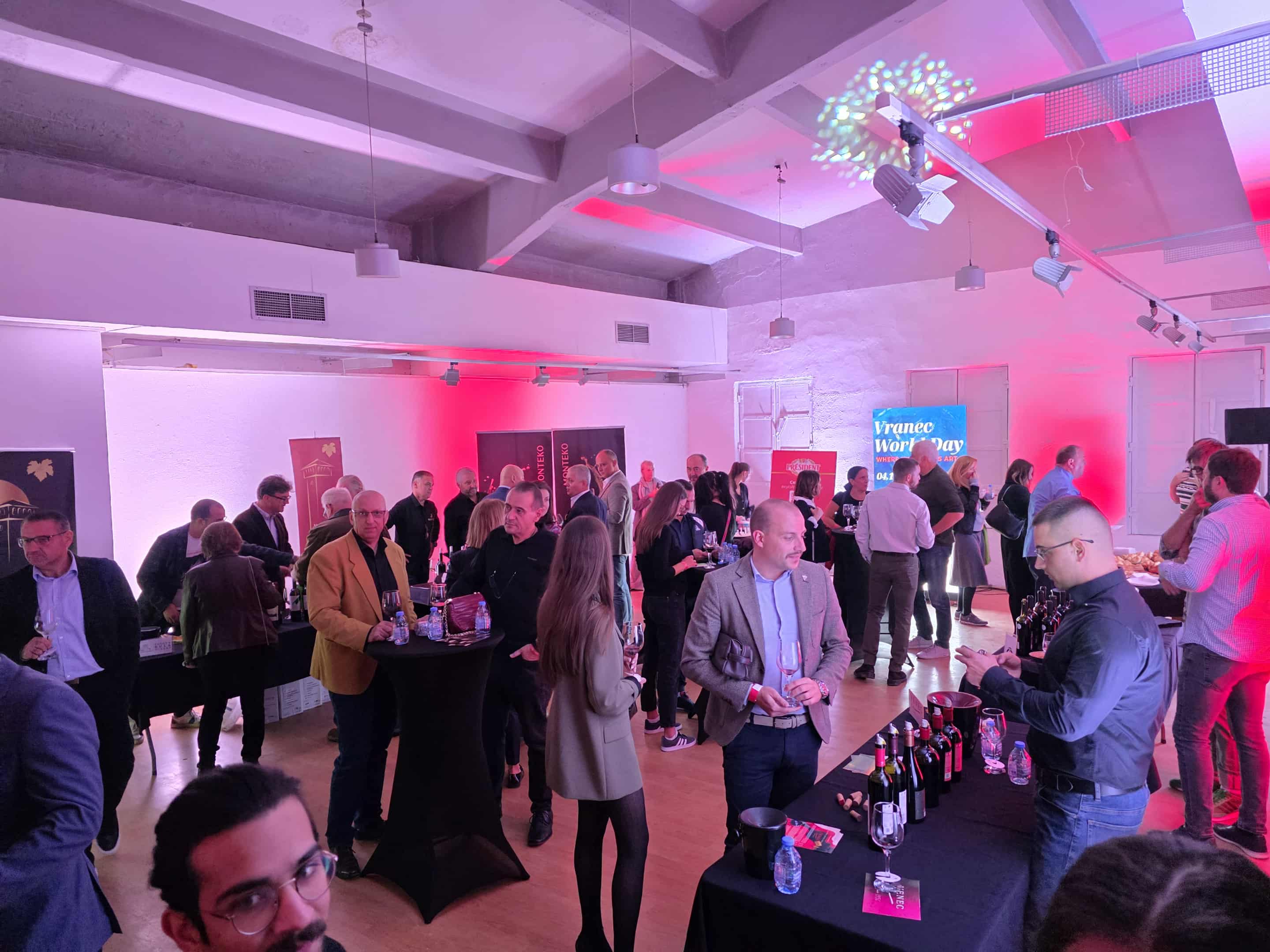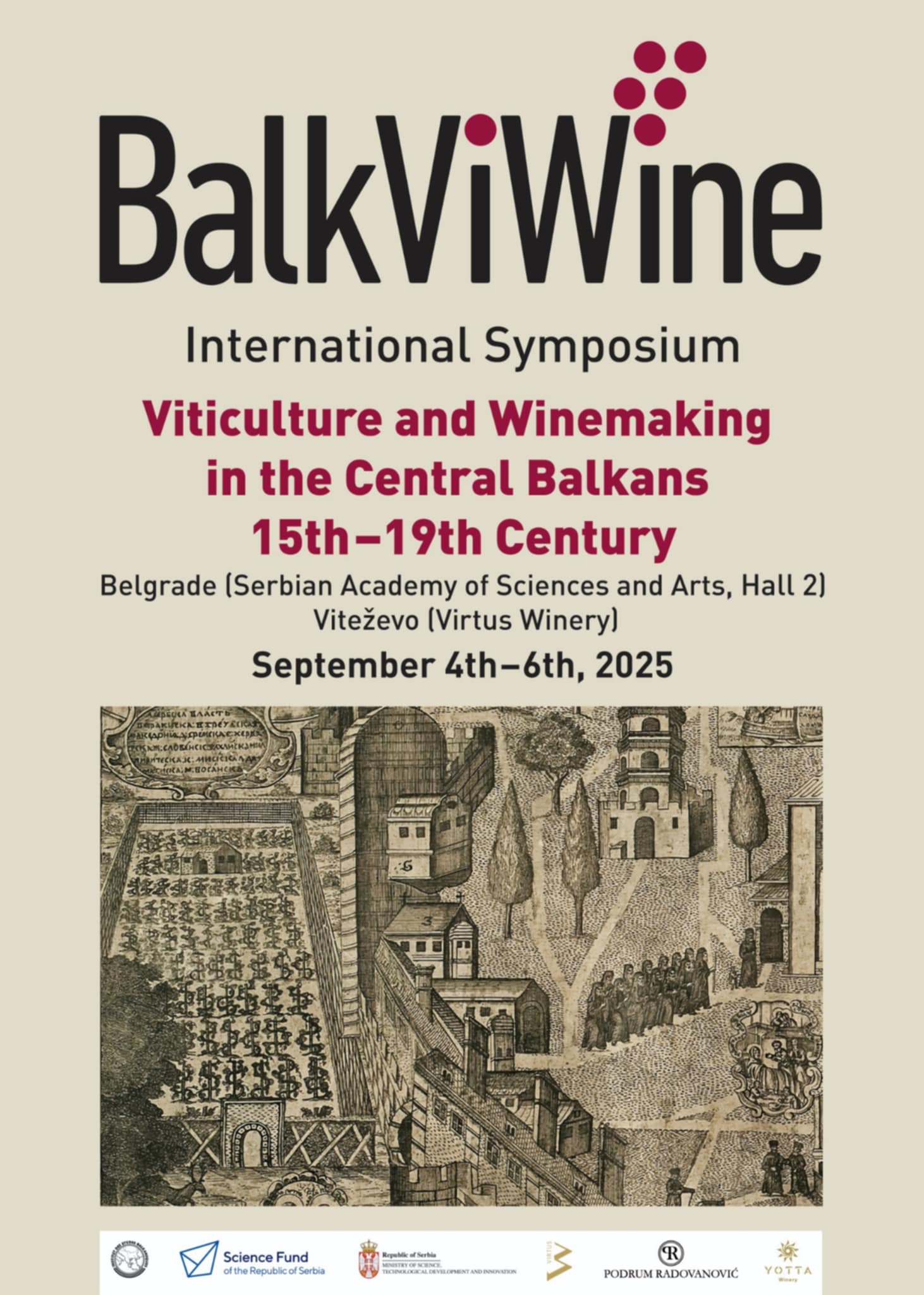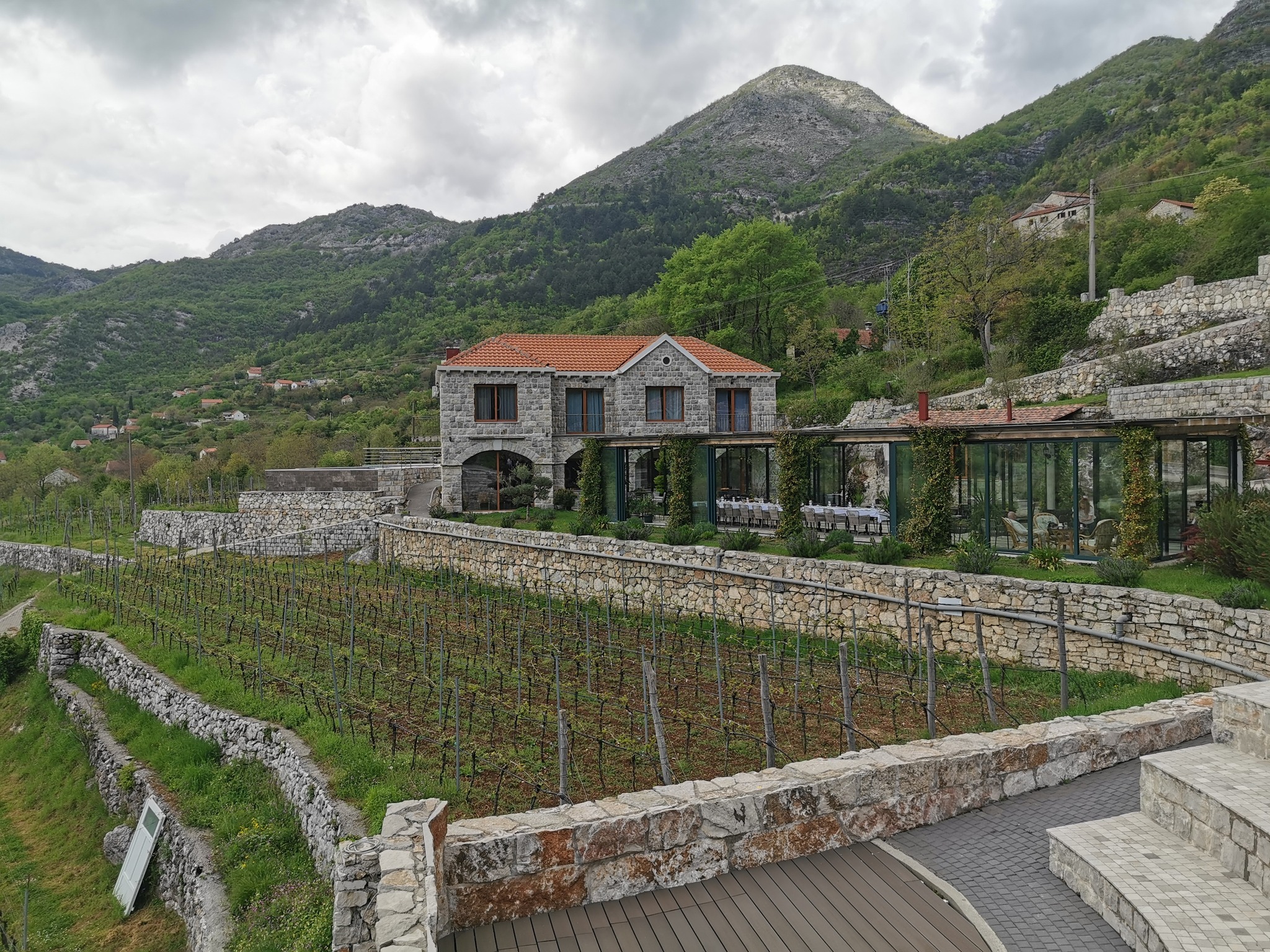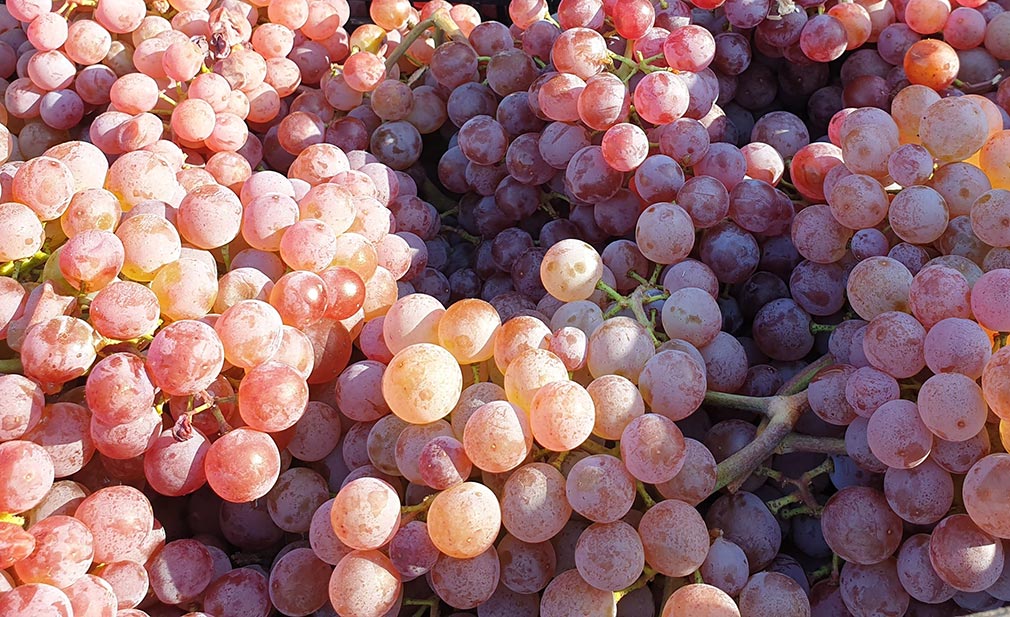News
News / 06/16/2014 / 1710
Announced shyly, without a fanfare and bombastic statements, THE WINE IDENTITY Conference has brought new energy to Belgrade on 14th June, 2014. And the fact that the comments and stories about the conference are passed now when the show ended proves it hit the target. Wine magazine Vino&Fino and web portal dedicated to the wines of Serbia www.vinopedia.rs decided to join efforts and create synergy in order to transform Belgrade for a day into a wine hub, where wines will be talked about, new information and knowledge shared between distinguished wine experts, and even more wines will be tasted and commented in a relaxed atmosphere. A constant topic of discussion throughout the day was wine identity - an attempt to define the identity of Serbian wine, to consider how other countries have positioned their wine identity, to comprehend elements that constitute a distinctive wine region through the prism of local and indigenous varieties ...
Coincidentally, a Serbian version of the Bermuda Triangle took place on this particular day. Wine lovers had a difficult task - to make the difficult decision whether to head to the heart of Šumadija wine region, where the United Šumadija winemakers were organizing together for the first time Šumadija Wine Fair and presented this part of Serbia as a wine region that offers great food and wine and a full tourist offer. And for all those who still preferred staying in Belgrade this weekend, there was another dilemma - Wine Jam, dynamic urban wine story that has already gained recognition in the revitalized environment of Belgrade Savamala district, or Wine Identity conference ... Fortunately, schedule of programs on these two events allowed those most ambitious wine-lovers to attend both events during the day. The conference room of Hotel Falkensteiner where lectures and masterclass workshops were held as part of Wine Identity conference suddenly became too small for all those who wanted to hear the latest news and expand their knowledge about wines.
The search for the wine identity began in the north. Zoltan Szabo, winemaker and owner of a small winery in Hungary, President of the Association of Pecs Winemakers, took participants on a journey across the Balkans following the footsteps of Kadarka and other Balkans varieties. Exclusive news was shared that written evidence was found in Szentendre, a small town north of Budapest where the Serbs settled after the Great Migration of 1690s, which proves that the Serbian refugees had brought to Hungary the following varieties: Mirisavka (Tamjanika), Kratošija, Kadarka, Prokupac (which is in Hungary known as Turkish Kadarka), Slankamenka and wine called Rácürmös (i.e. Bermet). As accompaniment to the history and journey of Kadarka across the Balkans, the participants could also taste white wine made from Kadarka grapes (which was commonly done in Hungary if the harvest was poor, so the grapes could hardly give high quality red wine), rose from Kadarka grapes, then another wine in the style of Schiller wines, and finally red wines vintages 2012 and 2013, which demonstrated all the richness of Szekszárd wine region in Hungary, which is well-known for its Kadarka wines. The information that Prokupac can also be found in Hungary, which certainly represents the northernmost point where you can find this variety in the vineyards, caused a stir.
The exclusive information was shared at the conference that recent DNA research has clearly indicated a direct link between Prokupac and Kadarka. The natural cross between Prokupac and Romanian white variety Alba Imputotato (presumably some time in the 5th century AD) resulted in Papazkarasi variety, whose subsequent cross resulted in Kadarka. For the first time, wines from all three varieties were brought to one place, a sort of Balkans family reunion. In addition to Hungarian Kadarka wines and Serbian Prokupac wines, the conference hosted the Serbian premiere of Papazkarasi wine produced by Chamlija Winery in Turkey.
Special guest and the true wine star of the conference was Jo Ahearne from the UK, Master of Wine. Oenologist by profession, she had the opportunity to apply her knowledge and experience as a flying winemaker-consultant in wineries around the world, whereas wines such as Jacob's Creek, Charles Melton, etc. bear her signature, in addition to working in large systems such as Harrods and Marks & Spencer. The topic of her Masterclass workshop: "Think globally, act locally" has shown the way in which strategies for market positioning and branding are developed on developed wine markets. Through interaction with the audience, we also had opportunity to hear her opinion how Serbian wineries should prepare for penetration onto selected markets. It is a well-known fact that our wineries don't use sufficiently interaction and communication with wine journalists, critics, importers from abroad as a communication and marketing channel. In her opinion, our wineries would benefit more from organized press visits to wineries and specialized tours for wine professionals with tastings for selected audience than from spending money on attending expensive international wine fairs where thousands of exhibitors flock. It was particularly exciting to hear her demonstration of analyzing the labels and wines that she selected among Serbian wine samples; on the example of rosé wines from wineries Aleksić and Temet she has shown what kind of message is communicated by the label on the bottle and the importance of aligning the character of the wine and design of the label, in other words, the importance of sending the same message to consumer. During the Masterclass workshop, she also praised local wines - with undisguised delight, she commented that she wished someone from Aleksić Winery had been at the conference, because she liked the colour of rose wine from this winery, especially taking into account that the wine was made from Pinot Noir. Such rose wines usually feature light orange hues, whilst this rose has charming pink tones.
It is always a good idea to observe what others are doing in the domain of their own wine identity, especially neighbouring countries that are close to us in terms of wine history and climate, as well as the mentality. After a vivid demonstration that wine knows no political boundaries and that very often some varieties are spread across borders in several countries and grow in regions which share the same or similar characteristics (such as is the case with Graševina aka Italian Riesling), Saša Špiranec, the most famous wine critic of Croatia, presented a project that will finally overcome the political boundaries of countries. Three countries: Slovenia, Croatia and Austria gathered around a single idea: to create a wine region out of existing areas of Štajerska in Slovenia, Südsteiermark in Austria and Međimurje in Croatia. All these regions are currently overshadowed by other wine areas with better reputation in their respective countries, so this kind of cross-border merger would certainly contribute to the recognition and branding of exceptional wines from Sauvignon Blanc. To confirm his thesis, Sasha presented two wines from each of these three regionsso that we could witness on a practical example all similarities and common features that speak volumes in favour of creating a super-wine region on the territory of three countries. Similar attempts are made by winemakers from Italy and Slovenia, which similarly seek to unite Friuli and Brda. Of course, the biggest challenge in such an enterprise will be the harmonization of legislation between several countries. At the end of tasting, as a sort of surprise, Saša chose a wine whose identity was kept secret until the last moment, whilst letting the audience comment, and only afterwards find out the name of the winemaker and the wine region. Everybody present was quite unanimous that it is a Bordeaux-style of Sauvignon Blanc ... and Jo Ahearne MW defined it as a style of classic Bordeaux, to be more precise - Graves, just with one difference, in her words, it would be very difficult to find there such elegance and use of barriques. And then Saša revealed the secret identity: the vortex of complex aromas is - Vrtlog 2012 from Janko Cellar (Smederevo, Serbia).
From the early morning, the most common question asked by visitors in the corridors during breaks between workshops was whether there will be an extra seat for the lecture given by Marina Cvetic ... She is well known among local wine lovers. But that is exactly why everyone was eagerly waiting to hear how Gianni Masciarelli and his wife turned a personal vision and a dream into the identity of the entire region of Abruzzo. Hence it follows that wine identity also contains that component of winemaker's individual stamp. Wine and winemaker are inextricably linked, and this is particularly stressed in Marina's lecture.
The afternoon section of the conference began with a panel discussion attended by: Dragoslav Ivanović (Ivanović winery), Nebojša Aleksić (Temet winery), Đurđa Katić (SERSA), Nikola Matalj (Matalj winery), Milica Smoljanić (Budimir winery) and Nikola Kuzmanovski (Tikveš winery). Officially, for the first time in Serbia, the Wine mosaic project, which originated in France as a desire to preserve and promote authentic local varieties and wines from the Mediterranean region, ranging from Portugal to Georgia and Armenia, was presented. Website Vinopedia became a partner of the Wine mosaic in Serbia, so the activities of this organization will involve also wineries from Serbia which advocate for the preservation and promotion of indigenous grape varieties and wines from this part of Europe. Afterwards, Tomislav Ivanović, moderator of the discussion, attempted to answer through discussion with panelists what constitutes a wine identity of Serbia and the Balkans. Jo Ahearne MW also joined discussion and she gave Serbian winemakers advice not to expect the state to organize and do something for them, because it will not happen. The state only wants to collect taxes and to proscribe rules in order to facilitate governance. Therefore, winemakers must do things for themselves instead of blaming the state for everything.
Certainly the most exciting part of the Wine Identity Conference 2014 was a horizontal tasting of Prokupac wines that are currently available on the market and a vertical tasting of Prokupac wine made by Ivanović Winery. At the same time it was a unique opportunity to taste the last bottles of Prokupac wine from vintages 2003 and 2004 and assess Prokupac's ageing potential. All the more so because the available books usually specify that Prokupac may age up to 5 years. The tasting was led by Igor Luković, editor of Vino&Fino magazine. Prokupac is reputed somewhat as the wine with distinct tannins, on par with varieties such as Tannat and Xinomavro. However, this tasting has shown that modern Prokupac surely possesses its quaintness, with present but soft tannins that will easily find its audience among international wine lovers. It is obvious that with the use of modern technologies in the cellar, Prokupac found its modern expression that guarantees in the future a special place in the market and a new generation of young wine admirers of this Serbian variety. The following labels were presented at the horizontal tasting:
1 Vila Vina Prokupac 2012 - Milosavljević Winery
2 Sveti Gral 2012 - Podrum Botunjac
3 Experiment Prokupac 2012 - Podrum Čokot
4 Tri Morave 2012 - Temet Winery
5 Prince Rskavac 2011 - Braća Rajković
6 Triada Red 2007 - Budimir Winery
Silence echoed in the conference room of the Hotel Falkensteiner while the glasses were filled with Prokupac from Ivanović winery and the legendary vintage 2003, followed by vintage 2004. Something in the air was telling us that we are witnessing a historic moment ... Prokupac from Ivanović Winery, vintages 2003, 2004, 2006 , 2007, 2009, 2011 and 2012 ... the last bottles of 2003 and 2004, and a unique opportunity to assess Prokupac's capacity to withstand the test of time. Wines were technically correct and healthy, and surprise, surprise, it turned out that the vintage 2004 was in excellent condition ... The audience confirmed with loud approval that among all samples, the vintage 2004 is the best that Ivanović Winery ever delivered as a gift to Serbian wine lovers. Even Saša Špiranec stood up and commented (quote): "There it is , I still tremble while I am tasting this wine from the year 2004. Exquisite wine, certainly the best I've ever tasted so far from the Serbian vineyards. I am honored that I had this opportunity to taste it here. "This wine has definitely confirmed that Prokupac is able to spawn a serious wine, and finally shattered the view that Prokupac may mature up to 4-5 years. And winemaker Gaga Ivanović himself has paved his place on the pedestal of the modern Serbian wine scene. And at the end of the conference, the young oenologists Mladen Dragojlović and Srdjan Lukajić, who have already won numerous awards at international wine competitions throughout their short professional careers, brought in a more relaxed atmosphere in the conference, so we could engage in a personal dialogue with them accompnaied with wines from their portfolio, and reflect on the present and future of Serbian wine - a kind of insider's view from the wine cellar.
At the day's end, the organizers could sigh with relief because the goal was reached ... Serbian wine scene is in the process of defining its place and its distinctive identity and Wine Identity Conference 2014 with its tastings and Masterclass workshops expanded our horizons and opened new topics for discussion ... We may regret only the strange circumstances and weather conditions which led to having three important wine events in Serbia held on the same day, so for that reason the conference missed winemakers from Šumadija region All the more so because Šumadija has made its initial serious steps in profiling its wine and gastro offer. But the story of the wine identity must continue ... until the next Wine Identity Conference ... So, stay with us ...

Tomislav Ivanović
Awarded wine writer, wine critic and contributor to selected wine magazines. WSET3-certified author and editor-in-chief of www.vinopedia.rs. Member of Vojvodina Sommelier Association. Juror in national and international wine competitions. Lecturing about wines of Serbia and the Balkans. Local partner of Wine Mosaic organization. Co-founder of International Prokupac Day.

Pročitajte i druge članke iz ove rubrike:


VRANAC NA RASKRSNICI
PROČITAJ VIŠE


BALKVIWINE 2025 BEOGRAD
PROČITAJ VIŠE


KRATOŠIJA PROBUDILA CRNOGORSKE VINARE
PROČITAJ VIŠE


VINOPEDIA TOP 10 2024
PROČITAJ VIŠE


GIUAANI - VINSKI TURIZAM NA GRUZIJSKI NAČIN
PROČITAJ VIŠE
Winner MILLESIMA BLOG AWARD 2016

Pobednik MILLESIMA BLOG AWARD 2016
VINO & FINO wine personality of the year 2016

VINO & FINO vinska ličnost godine 2016